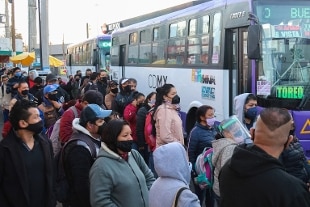Legambiente: smog outlawed in 35 Italian cities despite the lockdown
Are Italian schools not safe?
6 out of 10 do not have a certificate of viability, says Legambiente
Ecomafie, the report by Legambiente: in Italy 3 crimes every hour
Share
February 15, 2021 Italy does not travel by metro.
In the last two years not even a new km in the lines of the Italian cities.
And strong differences remain between North and South. This is the picture of Pendolaria 2021, a report by Legambiente published on the association's Facebook page.
The only exception is Milan which continues to have an efficient metro line.
Italy travels on the last wagons with respect to the network of European cities.
"The railway lines - underlines the report - recorded a growth in passengers in 2020. In particular, Lombardy had 820 thousand more commuters compared to 2018. Apulia boom with 150 thousand more users who have chosen to use regional trains. Infrastructure is the other node with most of the regional railway lines characterized by a single track. Just to give examples: Calabria has 686 kilometers of single track out of the 965 available, Basilicata has only 18 kilometers of double track
Commuters in the Lazio
In the Capital black stamp for North Rome and Rome Lido. In 2020 over 5 thousand trains were canceled, with peaks of 100 trips skipped in one day out of 190 total between urban and extra-urban ones. While Roma Lido lost 45 from 2014 % of users. "The difference between the improved service over the years on the eight regional railways and the disastrous service of the three Roman railways located
today in a terrible state due to bad management Atac ", writes the association.
Lazio is the region of large numbers with 530,000 commuters per day: the busiest railway in Italy is the FL1 Fara Sabina-Fiumicino Airport with 81,500 commuters per day.
Recovery Plan
The issue of mobility is a central challenge for Legambiente.
We need to focus on decarbonisation and improve accessibility. "Then reorganize urban areas, where more than two thirds of people's movements take place with the aim of increasing the number of trips per day on regional and
underground
trains
, from the current 6 million to 10 million within the decade. "All the pre-pandemic data confirm the desire of Italians to take trains, metro and trams, leaving the car at home. With the Recovery Plan we must accelerate this modality with targeted investments from the recovery of infrastructural delays in metropolitan areas to the electrification of the railway lines in the South, to the strengthening of secondary national lines ", highlighted Eduardo Zanchini, vice president of
Legambiente.
Help for the economy and the environment

